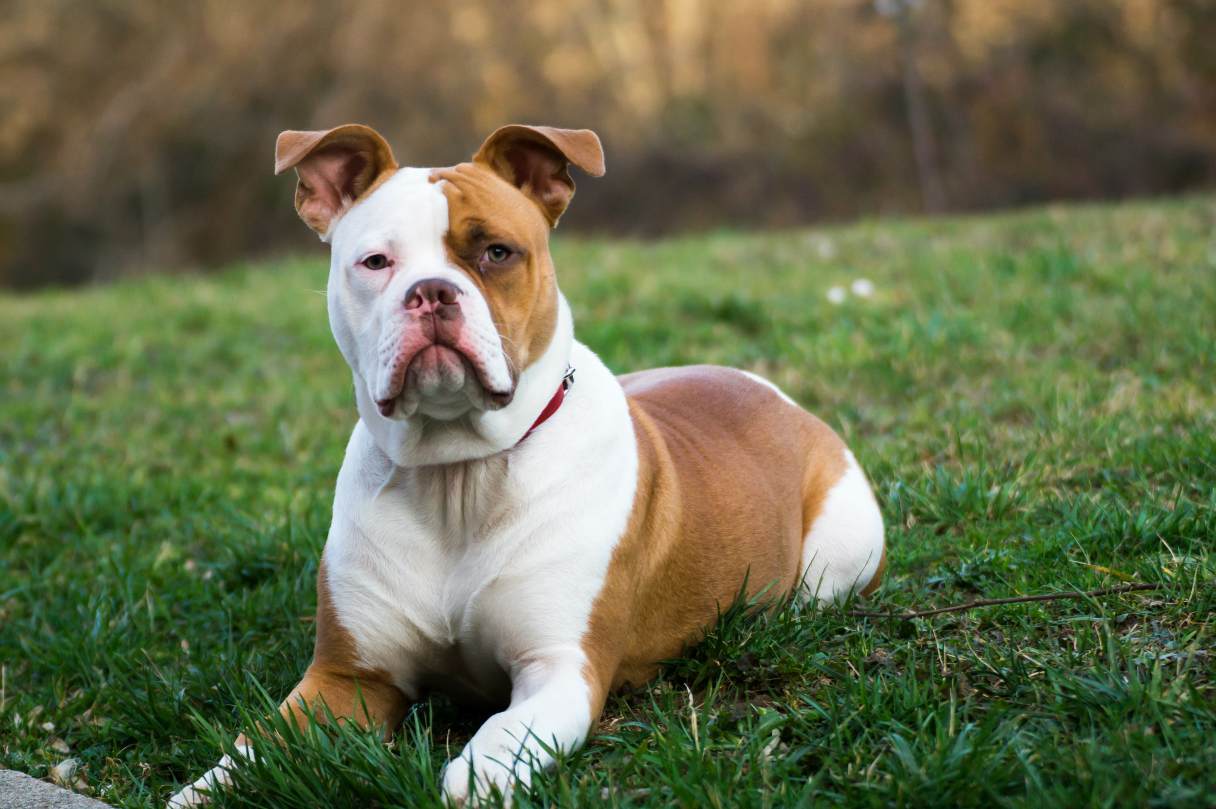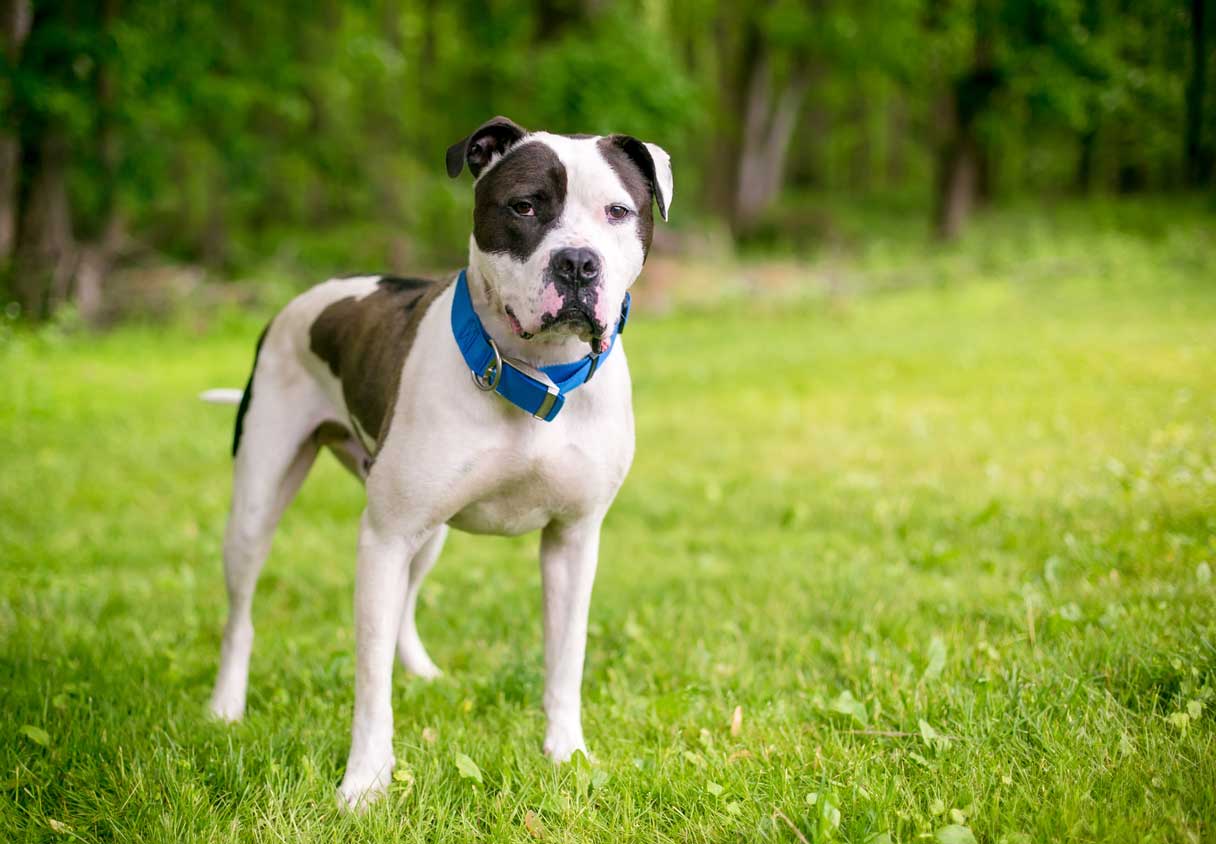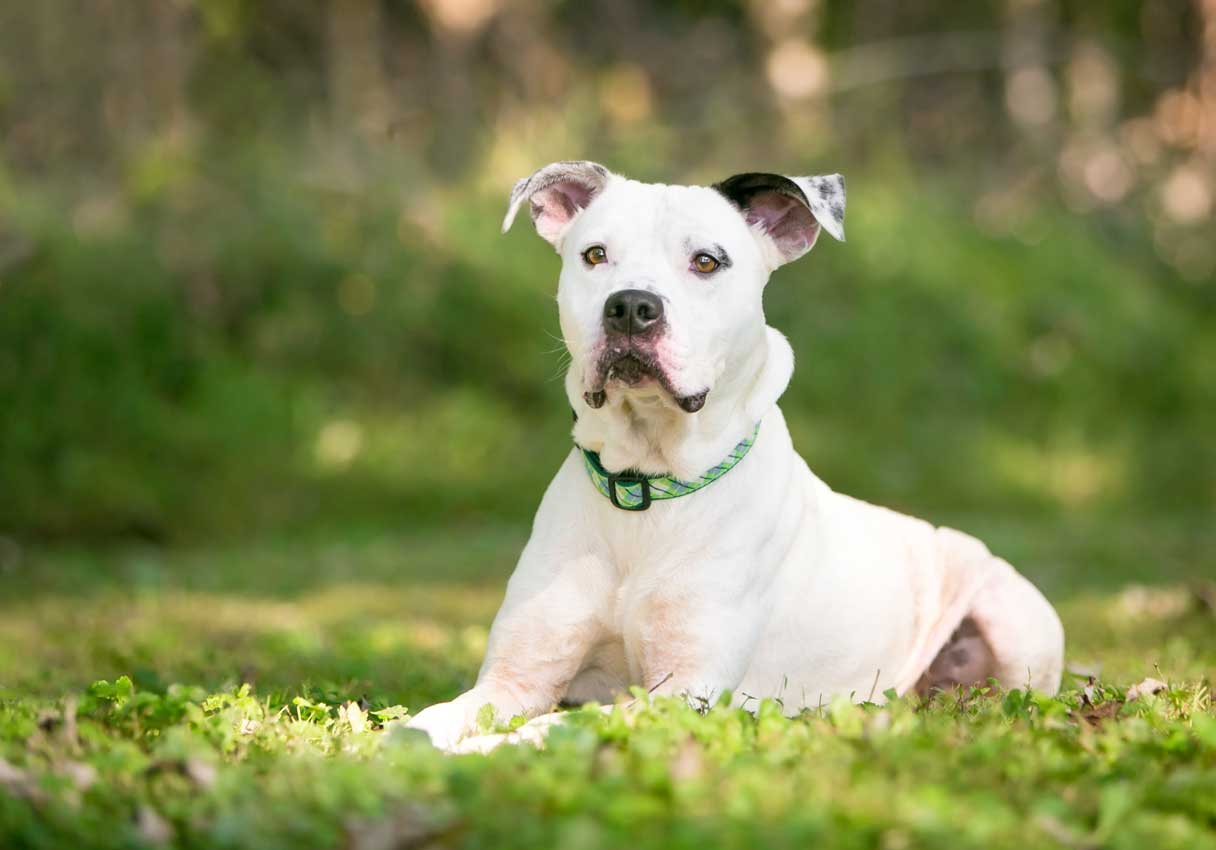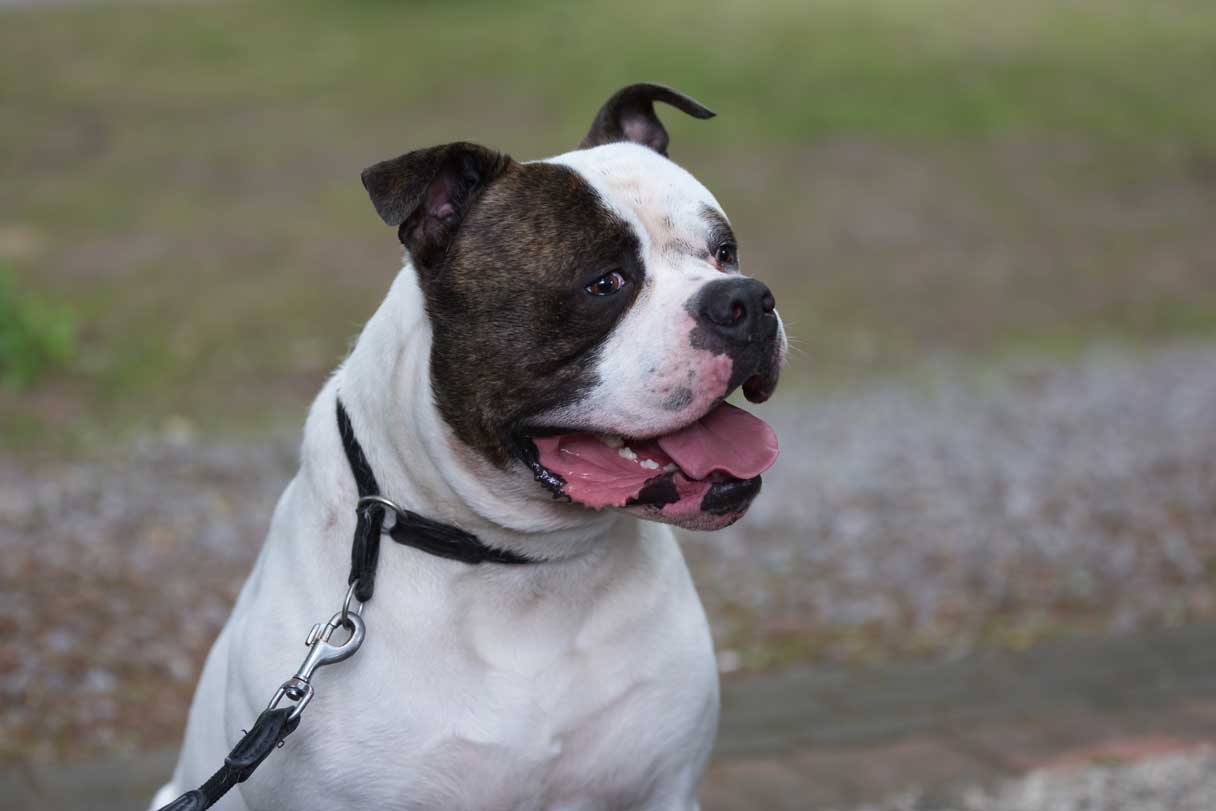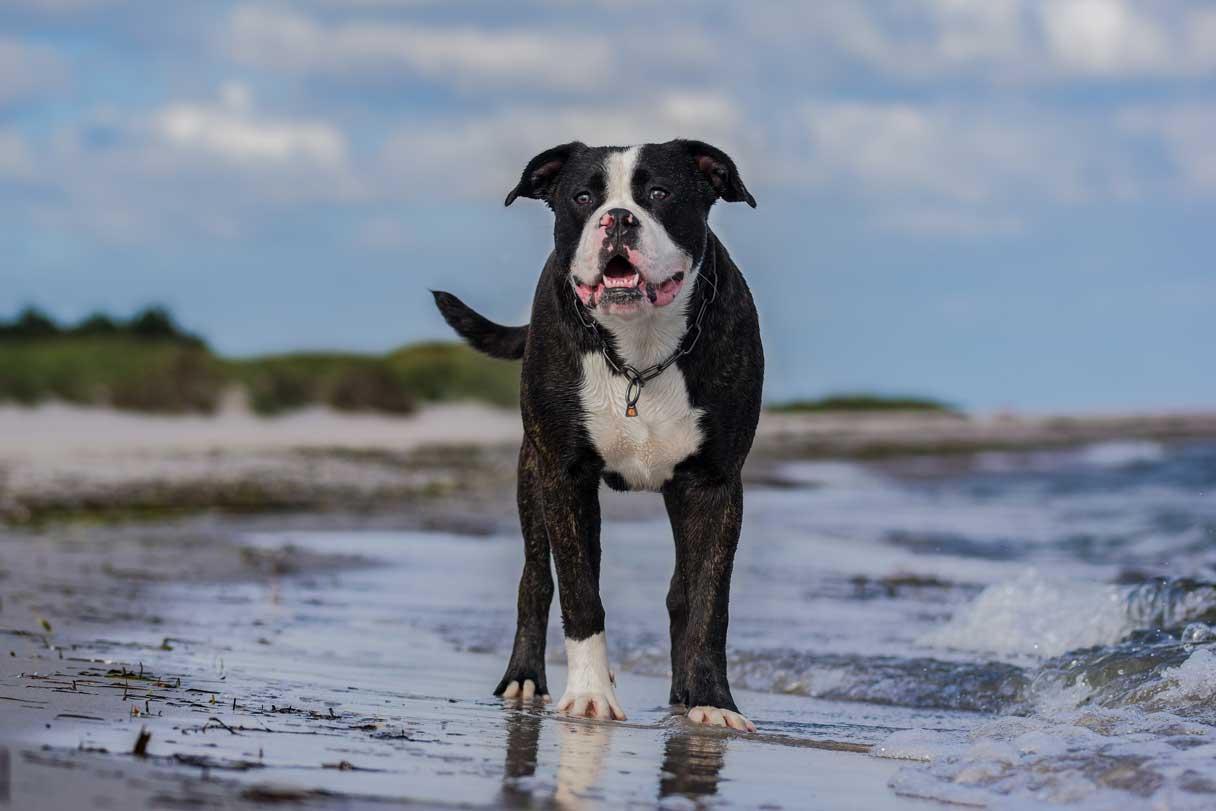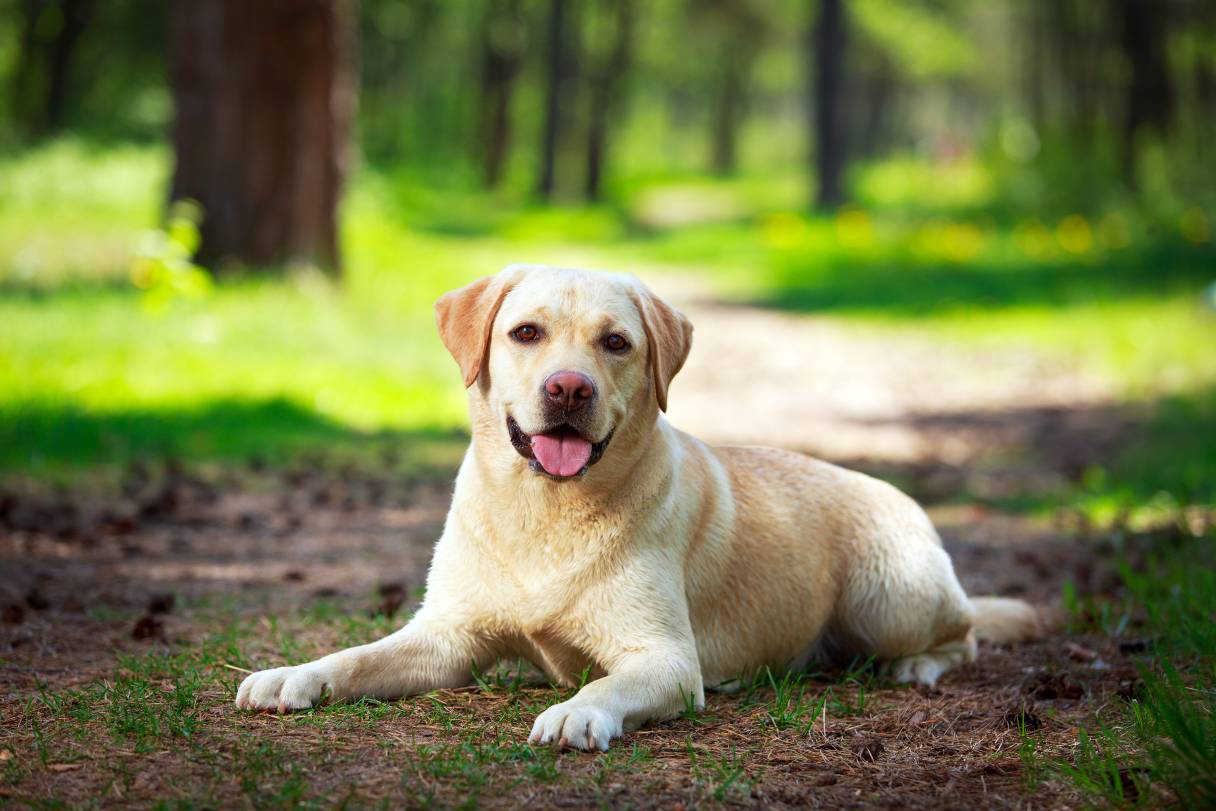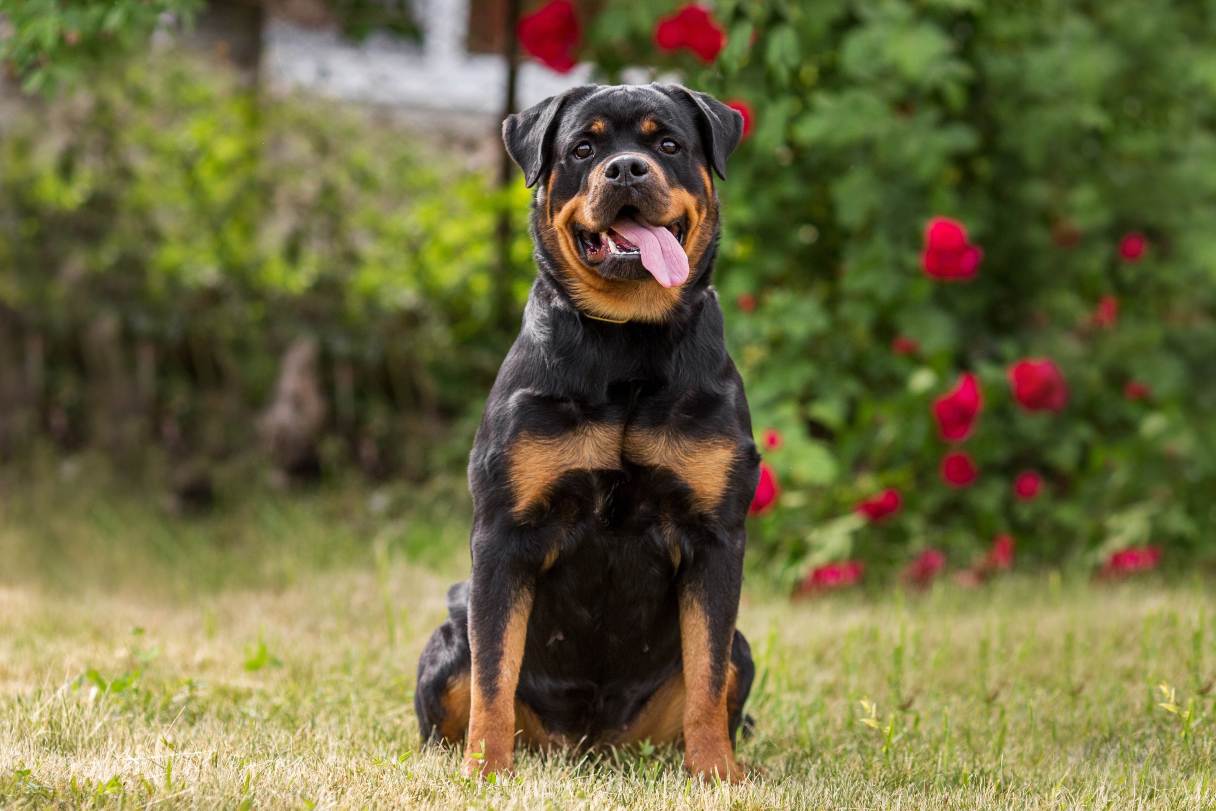Athletic, devoted and hardworking, the American bulldog — Ambull, or just plain bulldog for short — is a staple on farms and ranches across the southeastern United States.1 As handy as they are around the farm, these dogs also make good pets for the right owner.
Here’s what you need to know about the American bulldog’s temperament, health and wellness needs, as well as their daily care, so you’ll know if this is the right breed for you.
About the American Bulldog
The American bulldog is, more or less, a continuation of the original English bulldog, which was quite a bit different from the stocky, wrinkly flat-faced breed known as the modern English bulldog. The original bulldog was a larger, more streamlined and athletic dog that was prized for its strength and ability to bring down large cattle.2
After gaining popularity in England for use in the sport of bullbaiting, the original bulldog fell out of favor after this sport was outlawed and bred into the smaller, stockier version of the English bulldog we all know and love today.2
But farmers and ranchers who emigrated from England to the U.S. brought the older model with them, where it flourished as a working breed throughout the South, going by a variety of different names depending on the region. Despite this, the breed began to wane significantly with the advent of the 20th century and by the end of World War II had almost disappeared.2
Upon his return from the war, a breeder named John D. Johnson set about to revive the breed. He gathered other dedicated breeders to scour the South to find the best bulldogs for breeding purposes, developing the standard for the modern American bulldog breed.2
American Bulldog Appearance
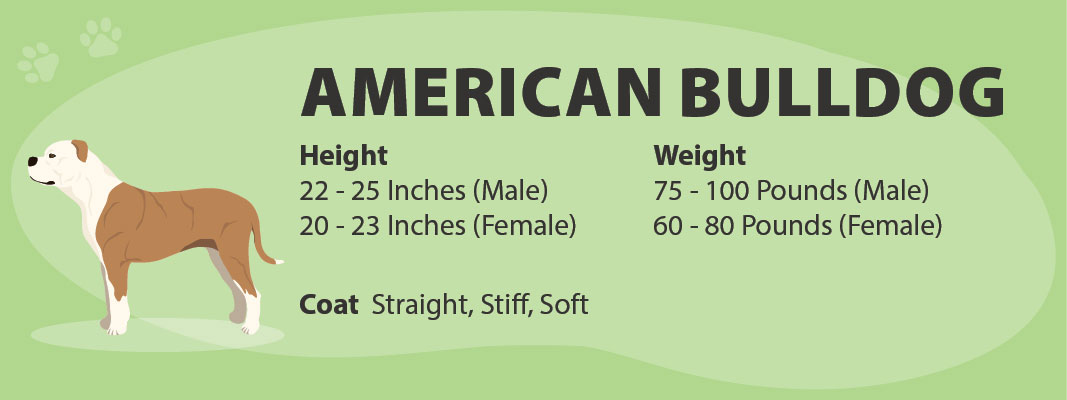
Male Ambulls stand 22 to 25 inches at the shoulder and weigh 75 to 100 pounds. Females tend to be smaller, standing 20 to 23 inches tall and weighing 60 to 80 pounds.1
They’re muscular and athletically built, with a well-proportioned body that’s slightly longer than it is tall. The chest is deep and broad, and the back slopes slightly down toward the hindquarters. The tail is thick at the base, long and tapered.2
These dogs have a large, broad head with a wide, slightly jowly muzzle that conceals a strong set of jaws. The ears may be medium-sized and floppy or may look more like those of a modern English bulldog, but they’re preferred uncropped.2
The coat is only an inch or less long all over the body. The hair is straight and may be stiff or soft. According to the breed standard, the coat can be any color or combination of colors except solid black, solid blue, tricolor or merle. A wide range of markings are also acceptable, but a full black mask is a disqualification. The skin on the lips, nose and eye rims should appear black, although red or brown on the nose is also acceptable.2
American Bulldog Temperament
American bulldogs are loving and protective guardians who enjoy the company of their people.3 They generally love children but, due to their size and strength, do best with older children who can play calmly with them.3 They can be silly and even clownish when they’re happy.1 But in their exuberance they could inadvertently hurt small children or frail adults when they get too excited.3
American bulldogs are athletic, high-energy workhorses.1 If you can’t give them a job, you’ll need to provide them with plenty of exercise and healthy outlets for their energy and work drive.1 Well-socialized bulldogs are generally friendly and accepting of new people, but may be aloof or a bit guarded with strangers.4 They can get along well with other pets, but they may not tolerate other dogs of the same sex.4 But they make excellent protection and guard dogs, both for livestock and people's homes.1
Early socialization and puppy training are musts with this breed to teach them how to get along with everyone.1 They may become headstrong and bossy and need consistent rules and routines along with firm leadership to establish and enforce healthy boundaries.1 Even so, this is an intelligent and versatile breed that can learn a wide range of tasks.4
Living With an American Bulldog
Bulldogs have a lot going for them, but they’re not the right breed for everyone. Here’s what you need to know about living with and caring for American bulldogs, including helpful tips for both current and prospective owners.
Who they’re best for
Ambulls are ideally suited for working farms and ranches where they can stay busy doing what they do best: helping their people wrangle hogs and cattle. But they can also make great pets for outdoorsy people who have the time and energy to devote to their daily training and exercise needs.3
Because of their size, strength and tendency toward willfulness, these dogs generally do best with experienced dog owners who can be firm but patient in training and consistent in enforcing boundaries. Prospective first-time dog parents should think long and hard and do plenty of research before taking on this breed.3
Living space
These large, energetic dogs need space, both indoors and out.3 They’re not particularly suited for apartment life, and they do best with a certain amount of fenced-in acreage to roam.3 That said, they can’t simply be left alone in the backyard to entertain themselves, which could lead to a variety of destructive behaviors.1
Exercise and activity
Bulldogs don’t just need lots of daily exercise to burn all that excess energy. They also need a variety of activities to prevent boredom and stimulate them mentally. In addition to training and walking, your bulldog will thrive as your jogging or hiking buddy and will relish engaging you in a game of tug.1
While they're puppies, it’s best to stick to low-impact and non-impact games and exercises to protect their developing joints and lessen their chances of developing joint health issues later in life.1
Grooming
American bulldogs have a low-maintenance coat that doesn’t shed much and only needs to be bathed when they get dirty in the course of work or play. Otherwise, running a brush over them at least once a week will help keep their coat in good shape. You should check their ears when you brush them and clean them once a month.1
Their nails may need to be trimmed every few weeks or so. Brushing their teeth at least every few days will help their teeth and gums stay healthy between dental checkups.1
American Bulldog Health and Life Expectancy
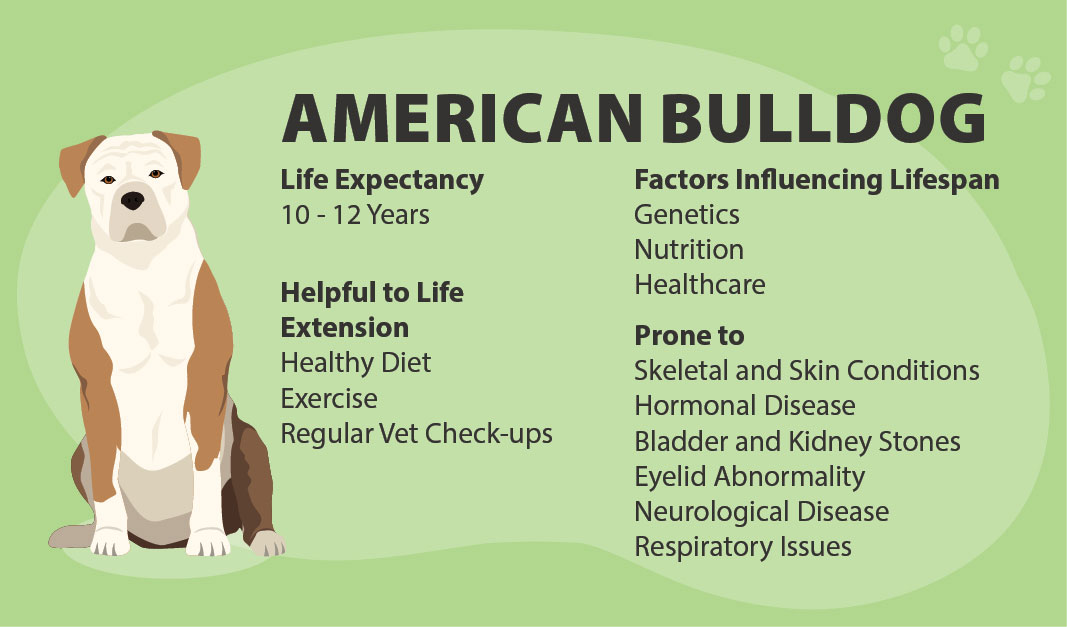
American bulldogs live 10 to 12 years on average,1 but genetics, nutrition and healthcare are all factors that influence an individual dog’s lifespan. A healthy diet and plenty of exercise, along with regular veterinary checkups, may help extend your pooch’s life.
You should feed your bulldog high-quality dog food that’s suited for their current life stage. Look for food with a nutritional profile that’s been approved by the Association of American Feed Control Officials (AAFCO) and talk to your vet about the best amount to maintain their ideal weight and avoid obesity. For best results, seek out large-breed dog or puppy food, which contains nutrients that help support large and rapidly growing bones.1
The American bulldog is considered a very hardy breed, and responsible breeders conduct genetic testing and health screenings to identify hereditary health issues as much as possible. However, bulldogs may still face a few health issues that require veterinary care or ongoing management. Current and prospective American bulldog owners should be aware of these potential health concerns:5
Hypothyroidism
American bulldogs tend to have low thyroid hormone, which can slow their metabolism. This may result in various health issues and cause symptoms that include lethargy, weight gain and a dull or thinning coat. This disease is easily managed with thyroid replacement medication.6
Hip and elbow dysplasia
Like many large breed dogs, bulldogs are prone to both elbow and hip dysplasia. Dysplasia is a condition in which the ball of the joint fits poorly into the socket. It can cause a lot of pain and, if left untreated, can lead to osteoarthritis. Mild cases may be managed with nutrition and lifestyle adjustments, while more severe cases may require surgery.7
Brachycephaly syndrome
Brachycephaly is Greek for short head. The American bulldog’s face is not as flat as that of its English cousin, but these dogs still have a significantly shortened snout compared to non-brachycephalic dogs.4 This is not itself a health condition, but it makes them more prone to the following:8
- Respiratory issues
- Dental issues
- Heatstroke
- Food and flea allergies3
- Complications from general anesthesia
Neuronal ceroid lipofuscinosis (NCL)
NCL is a neurological disease affecting several breeds, including American bulldogs. It usually manifests with clinical signs and symptoms between ages 1 and 3, including weakness in the rear legs and balance issues. It’s a progressive illness that can eventually affect all four limbs and may, in some cases, also cause vision loss. There is no cure or effective treatment for this illness, but ethical breeders avoid breeding dogs with this heritable condition.5
Ichthyosis
Ichthyosis is a severe sort of dandruff that produces large flakes of dry skin resembling fish scales, which is why it is named after the Greek word for fish. Its onset usually begins during puppyhood. While there is no cure, fish oil has been shown to help, and special shampoos are available that can alleviate the condition.5
Entropion
Entropion is a condition in which a dog’s eyelid turns inward, causing significant pain and irritation as the eyelashes rub against the cornea. It can usually be corrected with surgery. Although this can happen to dogs of any breed, it's a heritable condition in Ambulls.5
Bladder and kidney stones
Ambulls are highly susceptible to developing stones in both the kidneys and the bladder.5 Blood in the urine and straining to urinate are common signs and should be your cue to take your bulldog to the vet.9 Vets generally conduct a urinalysis on this breed at their regular health checks to test for signs of kidney and bladder stones.5
Buying or Adopting an American Bulldog
The average cost to purchase American Kennel Club-registered American bulldog puppies from a reputable breeder is around $1,500.10 Pricing depends on factors such as location and whether the parents are from championship lines and usually includes early healthcare, vaccinations and genetic testing.
American bulldogs and bulldog mixes of all ages can be found at pet shelters and American bulldog rescue organizations. The price to adopt an American bulldog is typically around $45011 but may vary depending on location and the age of the dog, as well as any special needs it may have and veterinary care it received. Fees usually cover the cost of vaccinations, spaying or neutering and other necessary vet care.
You can find American bulldogs available for adoption across the U.S. at RescueMe.org.
CareCredit Credit Card Financing for Dogs
The CareCredit credit card provides a convenient way to pay for your dog's vaccinations and other health and wellness expenses, including exams, medications and products at providers in the CareCredit network.* Continue your wellness journey by downloading the CareCredit Mobile App. You can find a provider on the go, manage your CareCredit account and easily access the Well U blog for more great articles, podcasts and videos. Use our Acceptance Locator to find a veterinarian that accepts CareCredit to help keep your pet healthy and happy for a lifetime of love.
In addition to pet care, you can also use your CareCredit credit card for dentistry, cosmetic, vision, hearing, health systems, dermatology, pharmacy purchases, spa treatments and so much more within the CareCredit network. How will you invest in your health and wellness next?
Author Bio
Jean Marie Bauhaus is a freelance writer and novelist who has been writing pet content since 2013. Her work has appeared on Forbes.com, Hill's Pet, Chewy, AKC.org and more.




